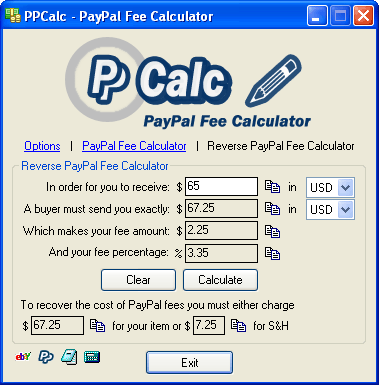

You can simply add an extra three percent to every payment that’s made through PayPal. While it may sound like a risk, it’s not unusual for small business to request coverage for PayPal fees. Start asking your customers to cover the costs of the money transfer. But if the sender doesn’t know you, they might assume that you’re trying to scam them.Īnother effective option to avoid dealing with PayPal fees is that you request your clients or customers to pay for them instead. However, this is yet another benefit for the recipient. That means there won’t be any chargebacks for any errors or mistakes made during payment. There’s no payment protection for payments made through the “Family and Friends” option. You have two options: either ask them to pay directly and select the “Family and Friends” option, or you can send them a separate invoice via another payment service. If you send them an invoice, the payment will go down as a business transaction, which will always incur transaction fees. Here are some important things that you should keep in mind: So if you accept payments as a lone freelance worker, you can choose the “Family and Friends” option to avoid the fees PayPal has waiting for you. However if they choose the latter, then there will be no PayPal fees needed to be paid by the recipient. When someone pays you via PayPal, they will be asked if they are paying for either “ Goods and Services” or “ Family and Friends.” If your client chooses the former, then the payment will be charged with the 2.9 percent and $0.30 basic fee as discussed previously. All you need is a PayPal account to receive money. However, it you are a single contractor, or an independent freelance worker, then this can be the perfect option for you. This option isn’t something you can do if you run your business exclusively through PayPal and accept payments through an active website. Here’s a list of eight effective tips that you can use to do just that:

Fortunately, there are different ways you can do to get around this and other fees that are charged to your PayPal account. The same goes if you send money via PayPal. So, the bigger the amount you’re getting, the higher the fees will inflate. The basic fee that you’ll have to pay is $0.30 USD and 2.9 percent for each transaction. To put things into perspective, it’s important to know the numbers to determine how much you’ll be paying to PayPal. So, whether you receive of accept payments, you will feel the burden of these fees. All of these fees will accumulate into a single PayPal fee that you’ll need to pay for the process to continue. Apart from that, you also have PayPal Credit, a working capital and other business fees to factor into the overall charges. You will pay when you withdraw money from your PayPal account. You will pay a fee when you send or receive money. So, if you receive money through the platform, you’ll need to deal with the fees PayPal has instilled for all of its users. PayPal charges will depend on the amount that you’re getting through the platform. What you pay and how much you will pay will depend largely on a number of different factors. So, if you want to avoid scams or other misfortunes, PayPal is the best option.īut again, these fees can sometimes add up and will lose you a great amount of money. These fees for PayPal will be the requirement in exchange for a safe and secure payment. Before we delve deeper, let’s first discuss these fees that PayPal charges for every transaction that you make on their platform.


 0 kommentar(er)
0 kommentar(er)
